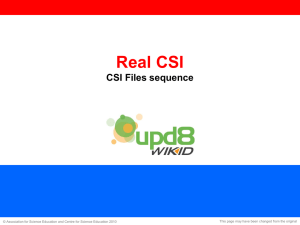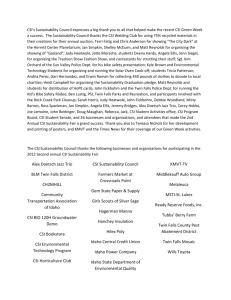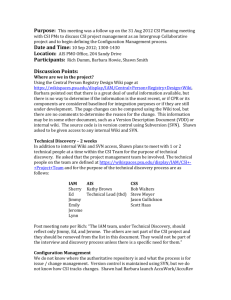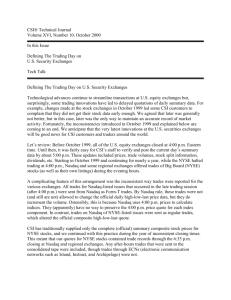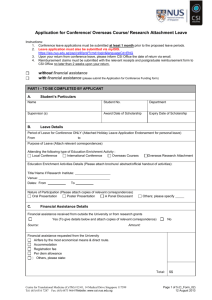Specification changes to handle larger CSI Numbers 4.25.2006
advertisement
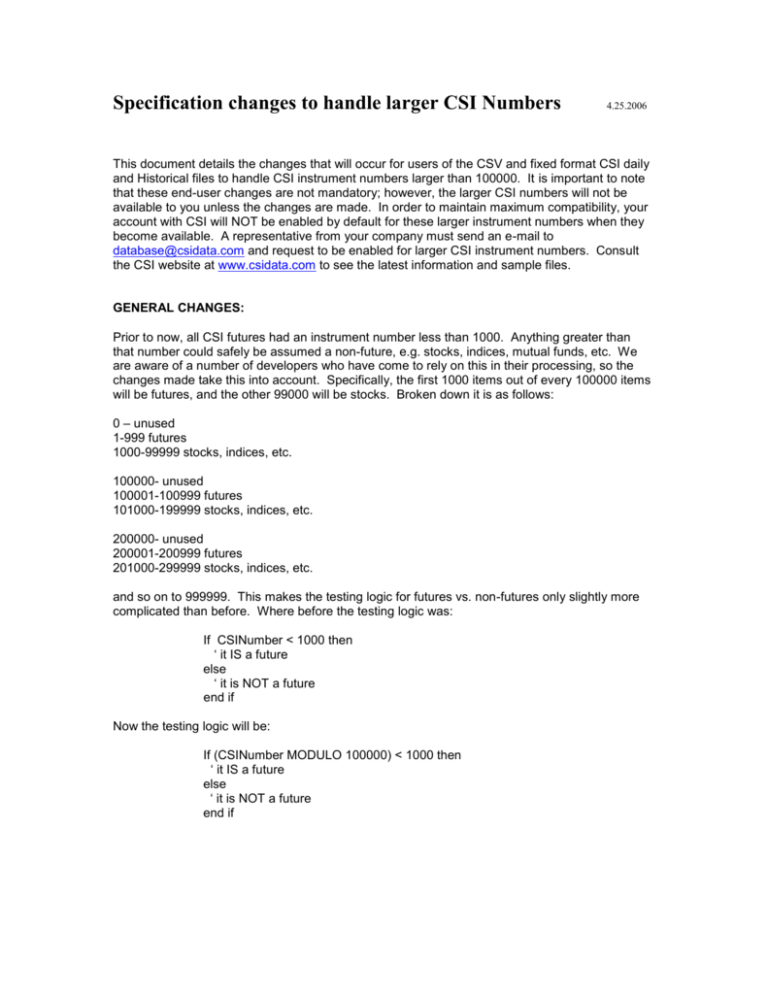
Specification changes to handle larger CSI Numbers 4.25.2006 This document details the changes that will occur for users of the CSV and fixed format CSI daily and Historical files to handle CSI instrument numbers larger than 100000. It is important to note that these end-user changes are not mandatory; however, the larger CSI numbers will not be available to you unless the changes are made. In order to maintain maximum compatibility, your account with CSI will NOT be enabled by default for these larger instrument numbers when they become available. A representative from your company must send an e-mail to database@csidata.com and request to be enabled for larger CSI instrument numbers. Consult the CSI website at www.csidata.com to see the latest information and sample files. GENERAL CHANGES: Prior to now, all CSI futures had an instrument number less than 1000. Anything greater than that number could safely be assumed a non-future, e.g. stocks, indices, mutual funds, etc. We are aware of a number of developers who have come to rely on this in their processing, so the changes made take this into account. Specifically, the first 1000 items out of every 100000 items will be futures, and the other 99000 will be stocks. Broken down it is as follows: 0 – unused 1-999 futures 1000-99999 stocks, indices, etc. 100000- unused 100001-100999 futures 101000-199999 stocks, indices, etc. 200000- unused 200001-200999 futures 201000-299999 stocks, indices, etc. and so on to 999999. This makes the testing logic for futures vs. non-futures only slightly more complicated than before. Where before the testing logic was: If CSINumber < 1000 then ‘ it IS a future else ‘ it is NOT a future end if Now the testing logic will be: If (CSINumber MODULO 100000) < 1000 then ‘ it IS a future else ‘ it is NOT a future end if CHANGES TO THE CSV (Comma Separated Values) FORMAT SPECIFICATION Since almost all of the record types are specific to either commodities or stocks, almost no changes are necessary to this format specification. The larger numbers will appear in the CSI number field of each appropriate record type, only now they will possibly go over 100000. The only ambiguity found was in field type #13, delete a past day of data. It gives the symbol and number but is ambiguous about whether it is a future or a stock that is to be deleted. Now, in addition to receiving the #13 record for compatibility, users will also receive a more specific type #17 (Delete stock record) or type #18 (Delete commodity record). The fields contained in types #17 and #18 are identical to the fields for existing type #13. For the full current CSV specifications, consult the CSI website www.csidata.com. CHANGES TO THE FIXED FORMAT FILE SPECIFICATIONS: The existing field sizes for commodities and stocks are fixed. Therefore the changes made will enable you to receive the larger instrument numbers via multiple header records. Currently the download file contains one header record, multiple data lines, and one trailer record. The new specification calls for the following: Header Record . Data records for first group . Trailer Record Header Record . Data records for second group . Trailer Record Header Record . Data records for third group . Trailer Record and so on. Programmers need to add 100000 to the instrument numbers in the second group, 200000 to the instrument numbers in the third group, etc. for all headers that are encountered.

